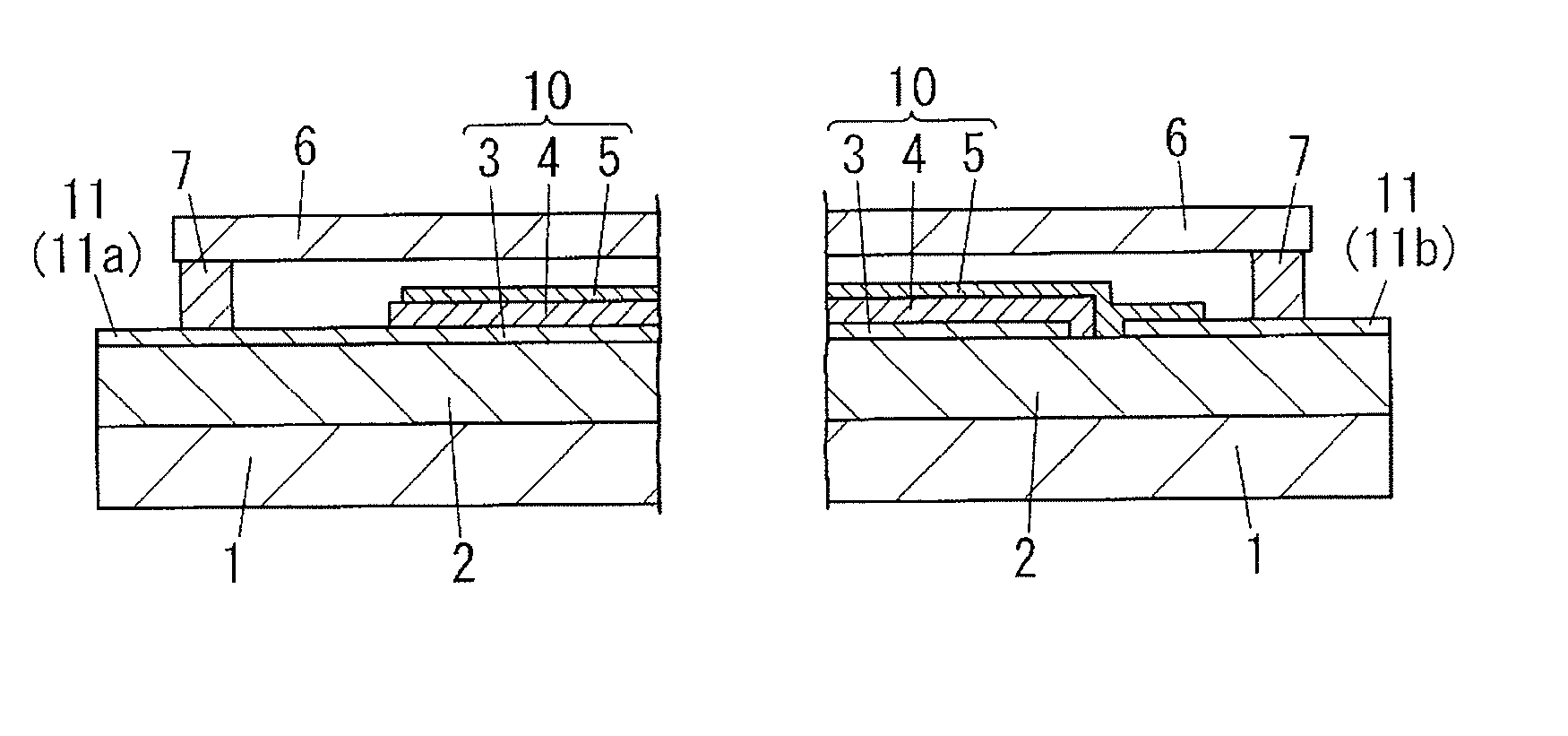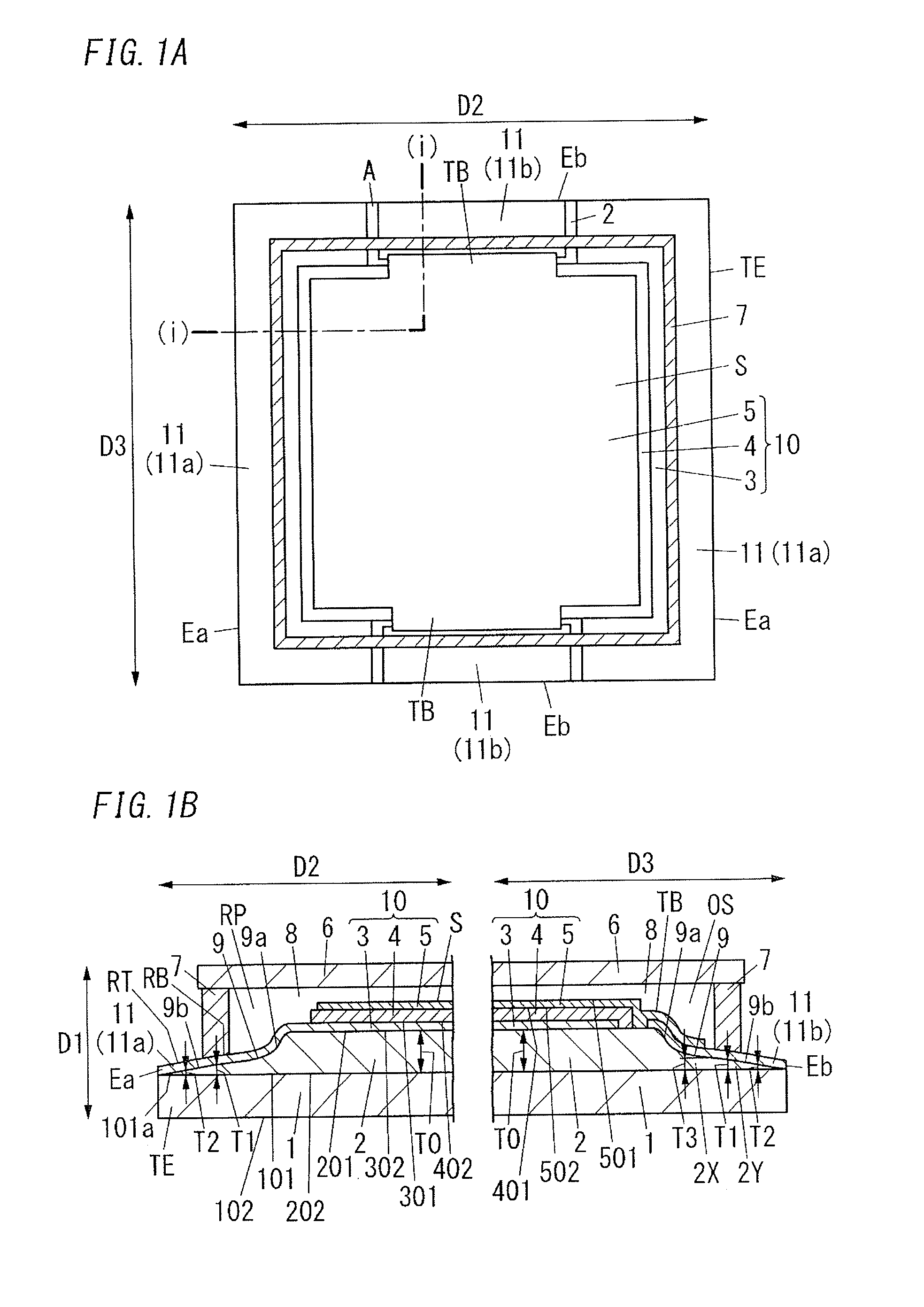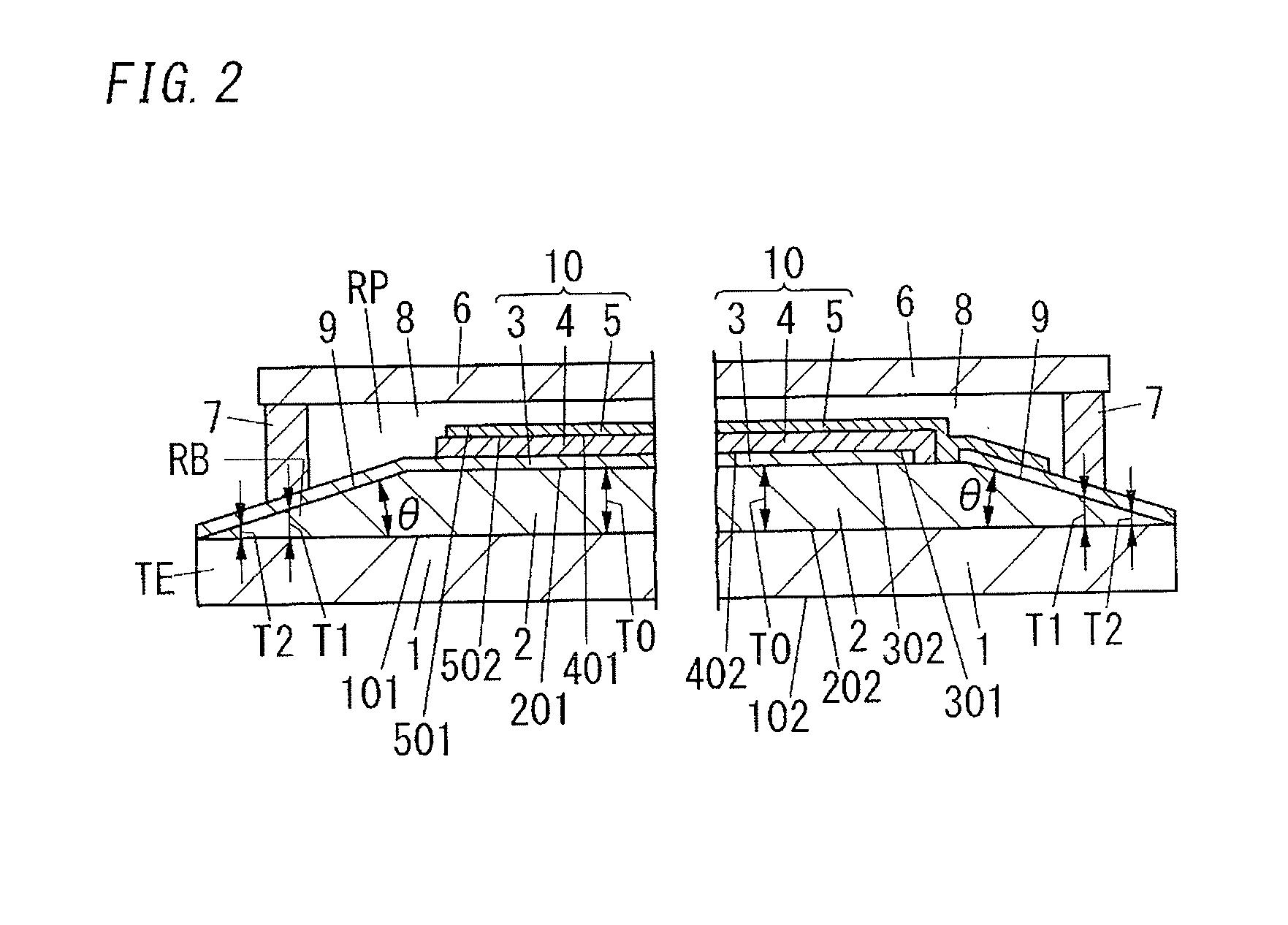Organic electroluminescent element
- Summary
- Abstract
- Description
- Claims
- Application Information
AI Technical Summary
Benefits of technology
Problems solved by technology
Method used
Image
Examples
Embodiment Construction
[0026]FIGS. 11A to 11B show an example of the organic EL element that contributed to creation of the organic electroluminescent element (organic EL element) according to the present invention. The organic EL element has a light-outcoupling layer 2 formed on the surface of a transparent substrate 1. An electroluminescent laminate 10 having a transparent first electrode 3, an organic layer 4 and a second electrode 5 which are arranged in that order is formed on the surface of the light-outcoupling layer 2. In addition, a covering substrate 6 facing the transparent substrate 1 is adhered to the transparent substrate 1 via an adhesive sealing portion 7 surrounding the electroluminescent laminate 10. Further, the connection electrode 11, which includes a first connection electrode 11a electrically connected to the first electrode 3 and a second connection electrode 11b electrically connected to the second electrode 5, is formed so as to extend from inside the surrounded region to outside...
PUM
 Login to View More
Login to View More Abstract
Description
Claims
Application Information
 Login to View More
Login to View More - R&D
- Intellectual Property
- Life Sciences
- Materials
- Tech Scout
- Unparalleled Data Quality
- Higher Quality Content
- 60% Fewer Hallucinations
Browse by: Latest US Patents, China's latest patents, Technical Efficacy Thesaurus, Application Domain, Technology Topic, Popular Technical Reports.
© 2025 PatSnap. All rights reserved.Legal|Privacy policy|Modern Slavery Act Transparency Statement|Sitemap|About US| Contact US: help@patsnap.com



